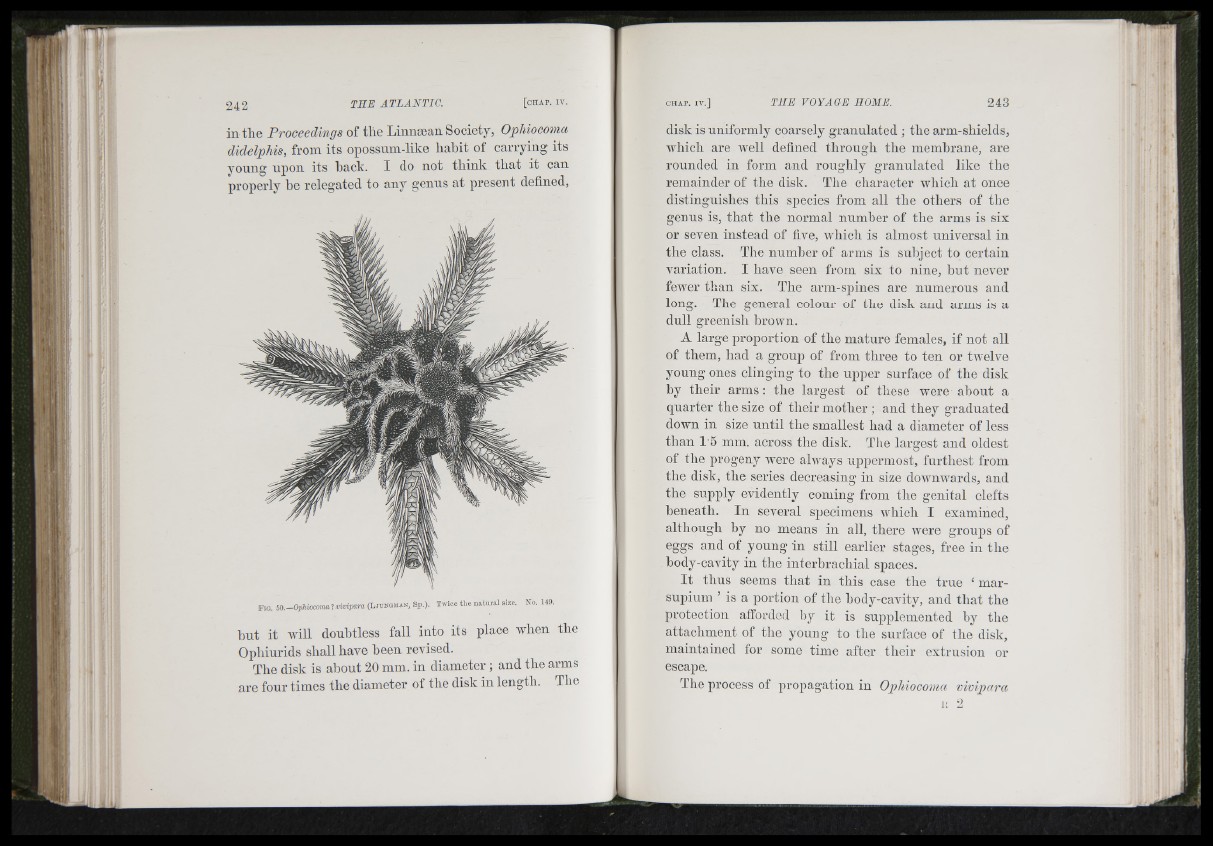
‘' V•: ! t
.
. y\;
, 'ivi
ii!
in the Proceedings of the Linnsean Society, Ophiocoma
didelphis, from its opossnm-like habit of carrying its
yonng npon its hack. I do not think that it can
properly he relegated to any genns at present defined,
Fig. hO.-Ophiooomalmvipara (Liungman, Sp.). Twice the n a tu ra l size. No. 149.
hnt it will donhtless fall into its place when the
Ophinrids shall have heen revised.
The disk is ahont 20 mm. in diameter; and the arms
are fonr times the diameter of the disk in length. The
disk is uniformly coarsely granulated ; the arm-shields,
which are well defined through the membrane, are
rounded in form and roughly granulated like the
remainder of the disk. The character which at once
distinguishes this species from all the others of the
genns is, that the normal number of the arms is six
or seven instead of five, Avhich is almost universal in
the class. The number of arms is subject to certain
variation. I have seen from six to nine, hnt ne\'er
fewer than six. The arm-spines are numerous and
long. The general colour of the disk and arms is a
dull greenish brown.
A large proportion of the mature females, if not all
of them, had a group of from three to ten or tAvelve
young ones clinging to the upper surface of the disk
by their arms: the largest of these were ahont a
quarter the size of their mother ; and they graduated
down in size until the smallest had a diameter of less
than 1-5 mm. across the disk. The largest and oldest
of tbe progeny were always uppermost, furthest from
the disk, the series decreasing in size doAvmvards, and
the supply evidently coming from the genital clefts
beneath. In several specimens which I examined,
although hy no means in all, there were groups of
eggs and of young in still earlier stages, free in the
hody-cavity in the interhrachial spaces.
It thus seems that in this case the true ‘ mar-
supium ’ is a portion of the hody-cavity, and that the
protection afforded by it is supplemented by the
attachment of the young to tbe surface of the disk,
maintained for some time after tbeir extrusion or
escape.
The process of propagation in Ophiocoma vivipora
j; 2